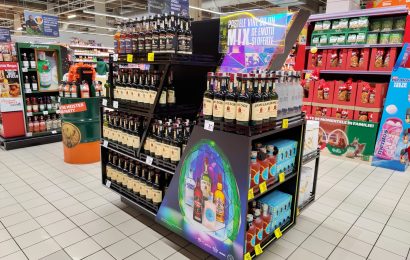Brands & Communities 2014 – the 1st day knowledge journey
What is a community?
“It’s not a noun, it’s a verb”, Vintila Mihailescu, Head of the Sociology Department at Romanian School for Administrative and Political Studies (SNSPA), said, during the first day of Brands& Communities 2014, a KnowHow Series powered by SMARK. Then he took us through all the basic steps that one must know about a community and its purpose for brands nowadays. For those who had never seen him live, Vintila is a really skilled speaker and he has great knowledge in how to teach us.
According to his perception, there are two big trends within communities: soft communities (the dilution of the traditional communities, from family to ethnicity) and the hard communities ( the so-called neo-communities, ex: from bikers to vegetarians). Communities are also beginning to be more fusion . People go from a market of desire to a more authentic economy, it’s time for oneself more than ever. Also, we start to leave the society of show and spectacle and go toward a more rationalized consumerism.
When taking a deeper look to the virtual communities, we can see that they are the counterbalance to the brand dominance in the 21st century. Brand management models assume that they marketers provide brands with meaning. Vintila Mihaileanu pointed out that we shouldn’t forget that today:
- communities are the ones taking avantage of the brands and not the other way around
- the influence of the brands upon communities is just a mere illusion
- the image that the brands have about themselves and the image that the communities have upon the brands are totally different
- we talk about Generation C and e-tribes
- consumers are brand polygamist (they are fluid, they travel from one brand to another, they don’t know fidelity anymore)
- brands must use engagement marketing
- the market has swallowed the culture and in doing so the marketing must be cultural, otherwise it loses
- the globalization must be taken really serious
- the online world is a completely different world, so it requires a totally different VISION.
A lot of interesting ideas to focus upon and think for a long, long time. After another two presentations about sports and communities in sport, I got to be inspired again by Monica Radulescu, Digital Strategic Planner CohnandJansen JWT. She focused on 6 big Facebook typologies and how a brand should interact and work with them in order to succeed in creating a true liaison with them.
She identified: the self-promoter, the gamer, the hater, the winnings-chaser, the copy-paste and the super-fan. The self-promoter wants to receive as much likes and shares as possible, loves selfies and to associate himself / herself with aspiration & cool brands. The gamer is usually someone with the age about 45 that is on Facebook only to play games and ask people for lives or other game related advantages. The winnings-chaser is someone who chases every promotion or prizes in the online and offline and ask his network to help him with likes and share in order to win them. He / she takes part in all the promotions / campaigns with prizes outthere, especially if they are free of charge.
The hater is usually the most dangerous types for the brands online, because it tends to create problems out of nothing and convinces other people that they might be right. So the brand should be always ready to answer fast in online and set the records right.
The copy-paste is someone who prefers to share info then to actually creat his own content. He knows everything, he is up-to-date with the news and reads daily every news feed on facebook. He likes to share pictures with cats and doen’t comment more than a “wow” or “how cool”.
The biggest brand-ally is of course the super-fan. The one that gives likes ona regular basis, talkes lovely about the brand, supports the brand and helps it get even more fans. But he is not that easy to find and win over.
The first panel ended with a great presentation by Semida Duriga (Group Creative Director) and Dana Pascu (Senior Strategic Planner) from Publicis Bucharest. They talked about values versus interests in online and how should brands interact with the online communities today. Consumers’ interest depend very much on the given context and are multiple, therefore it is very normal for people to migrate from one community to another, depending on the subject of interest. The communities migrate also around a hot subject, like in the case of Rosia Montana or Ukraine and also more communities can create a new community.
“It doesn’t matter that we identify the specific communities if we do not have the context in which we can target them”, Dana Pascu said.
As key notes from their speech I will never forget:
- the most secure constant is the change
- it’s just an illusion of stability
- the brands are now sharing likes between them, because same people like several brands
- the brands must coordonate with the other brands around them
- we must ask ourselves better questions, so we can demonstrate that we have understood the macro context from which the targeted people come from
- we should compare apples with pears (look in different cathegories, not just in ours)
- think about constelations (make liaisons between communities) : the brands must be in connection with each other; we must have more than the radiography of a person in a community, we better see all the communities he is a part of







2 comments
It was such a nice surprise to find a quick review of our presentation here. Thank you for your kind words of appreciation and see you next time
It was my pleasure Dana! I really enjoyed seeing you and Semida.
Comments are closed.